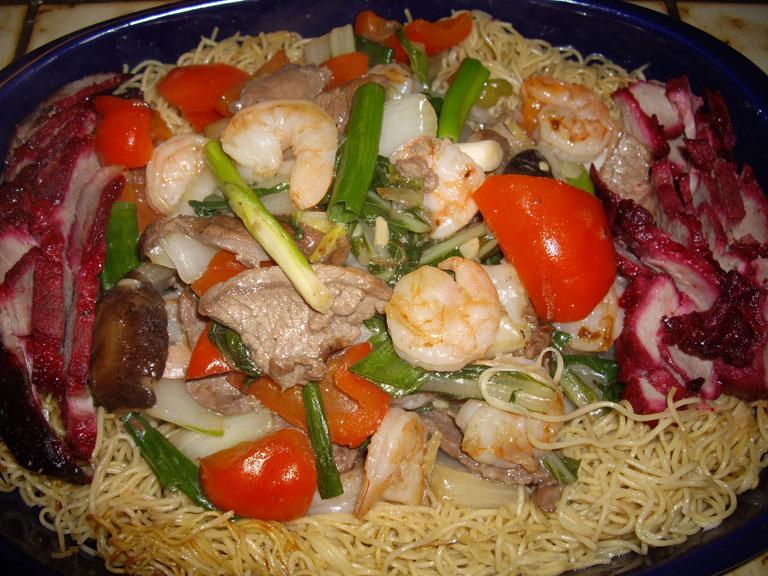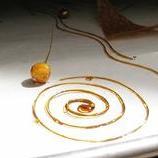Search the Community
Showing results for 'wok'.
Found 5,159 results
-

Cantonese White Cut Chicken 白切鸡: Poach, Steam or Sauté?
liuzhou replied to a topic in China: Cooking & Baking
Is it? Not in many Chinese kitchens. Most people don't have the equipment. You can't cook a whole, submerged chicken in a domestic wok, which is all many homes have. A wok and a rice cooker is all most people have. I don't have a pan large enough and I'm not going to buy one just for something I might cook once a year. Especially when I can buy the dish so easily, if I choose. But if I did buy a suitable pan, where would I keep it? Chinese home kitchens tend to be smaller than what you may be used to. Also. it uses a lot of water. Once to cover the chicken to poach, then for the ice bath which also has to cover the bird. Where do I get that much ice? I'm not saying no one makes it, but few do. I don't think any of my friends do. -
Pictorial: Chicken w/Lemon Grass Black Bean Sauce
xiaobao12 replied to a topic in China: Cooking & Baking
thanks for the responses. hzrt, although I do think that using a skillet gives me more surface area to play with, I have to use a lot more oil than if I were to use a wok. I guess this is the trade off right? -
Hi Elsie and Leslie, I have been cooking beef cheeks for a few woks with spectacular results. 9 hours at 81 degrees C eliminates the long wait and I reduce the bag juices to a glaze type consistency and serve on a bed of mash. Look here for a photo ... http://forums.egullet.org/topic/144603-dinner-2013-part-2/?p=1911678 Let me know if you want the entire recipe. Simon
-
When I'm not willing to fire my 1910 solid-fuel cookstove, I use a 2-burner propane rig like this: http://www.whatsitworth.net/cse/images/2013/01/19/226/1918-antique-glenwood-no2-cast-iron-double-burner-propanegas-hot-plate-stove_1.jpg A 20-lb bottle lasts me 6-9 months, and it hasn't set off the CO detector yet. An advantage of these is that, with very little effort, you can pimp them out to do >100K Btu for wokking--but do that OUTSIDE.
-
you wont be getting far with an electric wok. and the coating will sublimate at the temps you are looking for. there are induction wok 'burners': the type of wok you want is the one at the end of this vid: sort of blacked, Ming Tsai ( simply ming ) used one with an induction SS wok on one of his earlier shows. that was years ago and that model cost $ 10 k back then. then there is this: http://www.amazon.com/Adcraft-IND-WOK120V-Commercial-Induction-Cooker/dp/B004UI882A http://www.amazon.com/dp/B001H1021I?tag=wat013-20 if the price of these dropped a bit AND the circular 'depression' fit a good steel wok well, and there were enough watts, well, there it is!
-
Ok. I've read all the posts in this thread & I'm still not sure what wok to buy. We have an induction stove top. I've seen some woks that purport to work on these, but I'm suspicious. We do have a large gas BBQ which I'm sure would probably work, but that means going outside to cook. OK in summer, but not in winter. I'm leaning towards an electric wok. This most powerful ones I can find are rated at 2200 watts. Enough power? Don't know how this translates into BTU's. Also, any advice/ experience with non-stick coatings for woks. I can't find any high power electric one that don't have a non-stick coating. I would appreciate any & all advice anybody can give me.
-
Foil-lined wok , with the food on top of chopsticks going across the top, works pretty well for me.
-
Practise tossing food in your wok with a plate of peanut shells outside, or similar. That way you won't risk wasting food if you happen to toss it all over your hob.
-
The guy gave me a wok to take home with me and a 'spatula/ladle' and I bought a packet of salt to practice 'tossing' it. When I went back to the restaurant I just couldn't do it with out lifting off the 'nest' because I had been practicing walking around my apartment with the wok in the air. They then made be do it on the wok cooker with chopped cabbage. It was difficult. The kitchen was spartan and the weather was hot. But I soon managed to get into the required rhythm. Because that's what it is.....developing muscle memory to remember this rhythm. Shame is that now I am home I don't have cooking equipment to do this. I'm planning on rectifying this though.
-
Good descriptions, Keith and Ader, on how "NOT" to toss. That's exactly what I do at home, with my rounded-bottom wok and electric range, without a wok-ring. Can't stand them, and I think keeping the wok ON maintains the heat. I need to check out the other videos in the series Chris posted, especially the salt and pepper squid...
-
Do not lift your wok off the "nest" (I don't know the correct term for it either). To toss food in a wok, push it away from you then jerk it back suddenly. The food will hit the side of the pan and fly into the air. Just as you jerk it back, push it forward again to catch the food.
-
I noticed that as well. He was quite adept at the tossing. However, may I just add this one thing? I did spend some time working in a restaurant in China and I was learning how to 'toss'. The wok I was using was I would say larger than the one in the above video. Anyway, I was stir frying away as best I could and lifting the wok off of it's 'nest' (if that's a correct enough term?). And the guy who run the restaurant told me not to lift it up but more slide it towards you and back to it's housing/nest. The wok 'spatchula' was also used to kind of push the contents away from yourself to the other end of the wok and then tossed back as one moved the wok towards oneself. Of course, Kingkristo's set up wouldn't be suitable for this as are most western gas cookers. The guy showing me how to do it pointed out that in Chinese restaurants many of the woks are so big you'd never lift it up and 'toss'. I'm just saying what he told me but maybe in home cooking situations they do lift the woks up of the 'nest'?
-
Kingchristo: I use packaged dry wheat /egg noodles when I can't get fresh. The dried ones, put in boiling water until, as Mark said, just done. Drain and shock with cold water. Drain really well. I like to let mine sit in the fridge, barely covered for several hours or even a day before using them. The noodles are chilled, firm, and easier to stir fry. For what I call "plain noodles", I heat up the wok until very hot, and it is possible to do this even with my electric coil stove. Add oil and coat the wok well. Sprinkle in salt (and chopped garlic if you wish) Add a layer of noodle, spread it over the surface, and let it brown a bit. Flip the noodles over and do the other side. Then, I'd use chopsticks to loosen the noodles, and continue cooking until all the noodles are heated thru'. This way, I have a mixture of crisp and soft. At this time, you can add a splash of soy sauce, or, for me, a drizzle of sesame seed oil. To me, this is "plain chow mein". I also remember this version when we visited the northeast Yorkshire area. This version is versatile as I can top the noodles with a mix of stir-fried vegetables, with meat, or just stir-fried beansprouts and green onions. I also use my crepe pan to make a noodle "pancake" - crispy on the outside but soft on the inside. Then a mix of meat, vegetables, and sauce is poured over the top. Or you can make lo-mein, where everything is mixed in together. I am like you, I often like to replicate a dish I've eaten in a restaurant. Authentic? Who knows unless we've eaten in every corner of China! As everyone has mentioned, every place has their own version. If you can post a pictures, perhaps one of us can identify it as from "our region" I hope this will help you! Meanwhile, here's what I made for supper one night last week. Probably called Cantonese Chow Mein because that's where I am from.
-
Strange...what we grow up eating and exposed to is what we call "real Chinese". I wouldn't have thought kingchristo's dish was real if I hadn't had a salt and pepper chicken dish similar to his at an "authentic" Chinese restaurant here. At least, my students from mainland China all love this place and says it's "real Chinese food"... As for deep frying in a wok, it WOULD be hazardous with the set up kingchristo uses. But, you were sure adapt at "wokking" with the tossing! I've been cooking for longer than any of you, I think, and I still can't "toss" like that! I blame it on my short stature. BTW: Thanks for sharing your video, Chris, and welcome to the China forum!
-
Never eaten Chinese food in the UK, but if they are like the noodles here, I'd start by boiling the noodles to almost done, drain and rinse. Heat up some peanut oil in the wok, add crushed garlic, grated ginger and possibly just a touch of red pepper flakes (more or less depending on how spicy you want it). Cook for just a few seconds until the garlic starts to puff then add your noodles. Stir fry for few minutes then add soy sauce to taste and color. Continue to cook till the noodles are as fried as you prefer. That would be my basic noodles, you could add bean sprouts or other veggies and meat, but realize that veggies will release more water, so you will need something to thicken the sauce so it sticks. I usually will mix cornstarch with soy sauce and stir in for the last 30 seconds or so. I will also usually add some cream sherry or some sugar for a slight sweetness.
-
I have a few suggestions. Please take them in the spirit intended. First clean your wok before you use it. I can see bits of old food moving around when you add the oil. Heat the clean, empty wok then add the oil. In Chinese wok cooking, we never add cold oil to a cold wok. Stabilise your wok. It is wobbling about really dangerously. Remove that cable running across the gas rings. Again really dangerous. If you coat all the chicken pieces then put them in the oil more or less together, they will cook more evenly. Chinese cooks would never use a deep fat fryer. They would use the wok. A tablespoon of MSG is a huge amount to add to such a small dish. A teaspoon or two would be a lot more sensible. And contrary to popular opinion we do not add five-spice powder to everything. It is rarely used in China outside of Hong Kong/Guangdong. I don't know what this dish is, but I'm 200% sure it isn't "realchineserecipes". I've never come across anything close to it in China or anywhere else. Must be realmanchesterrecipes".
-
I like it simply wok-fried with a little garlic and a basic sauce of soy, sesame oil, rice wine, whatever. But the easiest thing I know to do with it--if you have some Asian style chicken broth around--is to drop individual leaves into simmering broth for a couple of minutes and pour the broth over cooked rice or wheat noodles. Let it be a little crunchy. Makes a great one-pot meal, especially if you have some poached shredded chicken to add.
-
Product is called "crab paste in soya bean oil". Normally one would use it in crab fried rice, but scallop fried rice seemed close enough. A very well seasoned cast iron wok. Seasoning would always peel off when I used a carbon steel wok, but I can beat on a cast iron wok with metal implements without any visible effect. Full disclosure - black bits were probably more a result of sugar in the dark soy sauce combined with inattention.
-
Bruce - can you describe the crab paste product? Sounds like something to try. I like the dark bits you got - well seasoned wok?
-
And AlenChris, didn't mean to ignore your question. I think gas ovens still heat up quicker, although the bricks I keep in mine mostly obscure the difference. The bigger issue for me is the quickness and finesse of control of the gas flame. E.g., when the pressure cookers get up to pressure, I turn down the flame, and don't have to flip the pot back and forth between burners, or watch and hope it doesn't explode while the burner under it cools. Since I've often had three pressure cookers on the stove at once (most recently just a week ago), so it's not a rare situation. And then there's the wok--a proper cast-iron version--so much easier to get it down into the flame on a gas stove. Electric just can't handle that.
-
If something like that burner pattern was available in gas, it would be perfect. I can't use the 22-quart aluminum pressure canner on induction, and that's a pot I can't do without. If I could find a stainless pressure canner in a similar size, I'd consider induction, although the wok would still be a problem.
-
It is a lot of fun and impressive to be able to toss food in a wok, I do it all the time, but there is no real purpose in terms of ending up a more delicious dish. It is mostly showmanship, IMHO. It is very useful if you work in a busy kitchen and have to handle three woks at the same time. Thank you for sharing the video. Very interesting and informative. Just a quick suggestion: I know most people know about being careful handling raw chicken, but for forum like this, you never know. You may want to add a quick statement to your video about food safety. This is not a criticism, not even a suggestion. Just my own preference if I was to make this dish. I generally add scallions at the very end. I find I get better flavor and color from the scallions (spring onion). I also like to add a few drops of sesame oil at the last moment. dcarch
-

Pictorial: Chicken w/Lemon Grass Black Bean Sauce
hzrt8w replied to a topic in China: Cooking & Baking
Thanks xiaobao. The heat was on high. I wish I have a wok burner but I don't. That's just a regular gas range in American kitchens. How not to burn the meat? Stir it often I guess. Never thought of it. -
I like to use my wok to make them. The shape of the pan means that less oil is used, and I get a wide surface area.
-
While ideally, in fantasy land, I would love to cook all sorts of cuisines and dishes wonderfully, and milk my own cow, ferment my own vinegar, and grow all my own produce, etc, etc, in reality, I like to prioritize my cooking goals, at least while I'm still a humble young amateur. In no particular order this translates to: I would love to: (1) Make a great New Zealand-style meat pie (mince; mince and cheese; and steak, onion, and cheese in particular), (2) Make really tasty Mexican and New Mexican food from scratch, especially when I'm living in Mexican-food-wastelands like New Zealand, (3) Make a handful of good, more-or-less authentic Italian dishes, like pasta e fagioli and really good pasta sauces, (4) Master pasty-making, (5) Make a lot of things myself, like pickles (all sorts), Mozzarella and Ricotta, kimchi, liqueurs, infusions, salt pork, sausage...just whatever I'm into enough to make myself, without being too ambitious, (6) Make a really great loaf of hearty, crusty bread... If anyone's familiar with Hungry Ghost Bakery in Northampton, MA, they are my idols. (7) Make great pretzels! + (8) fondue (9) Make a damn-good weeknight stir-fry, without worrying too much about being 100% authentic or firing up a restaurant-strength wok, (10) Make a killer cheeseburger. For me, the current standard- bearer is either In-n-Out, or a New Zealand food truck or fish-and-chips shop burger (I'm sure the $26 burger is heavenly, but budget matters a lot to me at this point...) There's probably a lot more, but these are the priorities for now. What about you?











